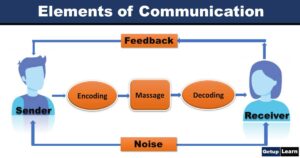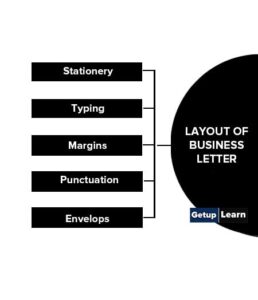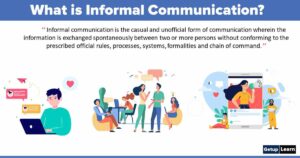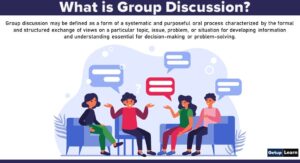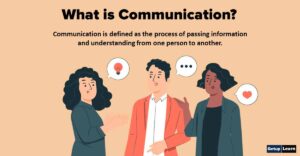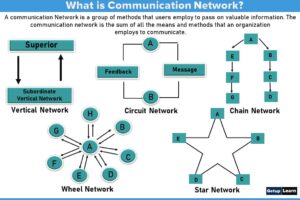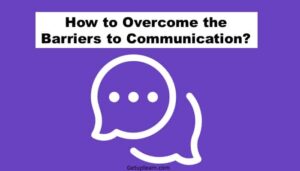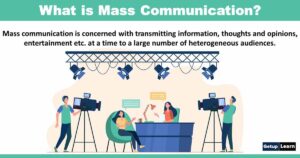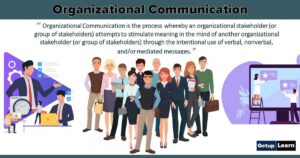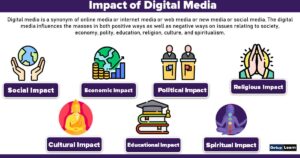Table of Contents
Models of Communication
Following are the models of communication:
- Dance Model of Communication
- Schramm’s Model of Communication
- Gerbner Model of Communication
- Newcomb Model of Communication
- Convergent Model of Communication
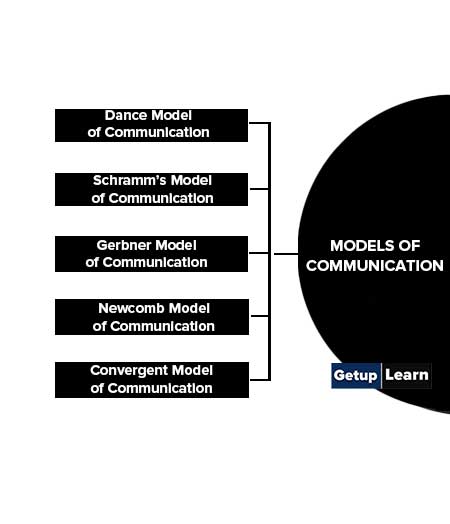
Dance Model of Communication
American Mathematician Frank. E.X. Dance propounded a communication model in 1967 which is often described as the ‘Helical Model’, ‘Helix’ means spiral or curly or scrolled. He developed this model for a better and improved communication process. He explained and described communication as a dramatic and curve-linear process. There is no start or end to communication.
It is constant and continuous. This model is quite different from other models of communication. This model also looks like a spring. This helical model is believed to be an extensive improvement on the Schramm-Osgood circular model. According to F.E.X Dance, communication is activated in a circular manner constantly and continuously.
It starts once the communication process starts, it makes a full cycle and gradually comes back to the same point from where it started. It will influence the receiver more if and when it comes back. This model is closer to the interpersonal communication process but fails to explain all areas of communication effectively. This model may be illustrated with the help of the following figure:
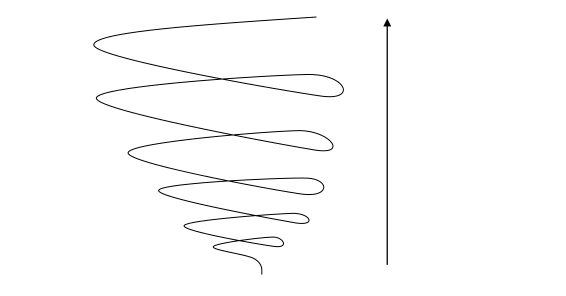
This model takes different shapes in different situations for different individuals. For some, the helix tends to be wider due to prior knowledge of the topic. For others, the helix expands moderately with little basic knowledge. One may get the notion from this model that man while communicating is active, dynamic, creative, artistic, and able to store information, whereas many other communication models present a human being as a passive creature.
Schramm’s Model of Communication
Wilber Schramm in his paper entitled ‘How Communication Works’ propounded a linear model in 1954. In his early research, he used the linear model, i.e., the SR model in the 40’s. Later he realized the importance of the message and proposed the SMR model in the ’50s. It was just like Aristotle’s model.
Again he realized the importance of channels and proposed the SMCR model in the late 50s. In the 1970’s he picked up the ‘noise’ component from Shanon& Weaver’s model and ‘feedback’ from Berlo’s model. In fact, Schramm has removed two elements from Shanon& Weaver’s model and gave his model, a form of the human communication process.
He removed the elements called ‘Receiver’ and ‘Transmitter’ from Shanon& Weaver’s model and added ‘Encoder’ and ‘Decoder’ as new elements. According to Schramm, the encoding and decoding of messages are the most important components of communication. He further explained, “Substitute ‘Microphone’ for the encoder and ‘Earphone’ for the decoder. Consider that the source and encoder are the ones. And receiver and decoder are another.”

- S: Source
- M: Message
- C: Channel
- D: Destination
- F: Feedback
- N: Noise

- S: Source
- E: Encoding
- M: Message
- C: Channel
- D: Decoding
- Ds: Destination
- F: Feedback
- N: Noise
Wilbur Schramm further added, “In fact, it is misleading to think of the communication process as starting somewhere and ending somewhere. It is really endless. We are little switchboard centers handling the great endless current of information.” This model may also be depicted with the help of the following figures which are as follows:


Wilbur Schramm has artificially and creatively combined Shanon and Weaver’s model and Osgood’s model and presented it in a new form which may be depicted with the help of the following picture:

Thus, Schramm added one more element called ‘Field of Experience’. By dint of adding this element, now both the source and the destination encodes and decodes respectively as per their own perception, experience, and understanding. If both encoding and decoding are equalizing each other, then the communication activity is on the way to success or else a failure.
In this way, Schramm’s model is a more complete and concretized model which is again described as a non-linear and circular model. This model has a few striking features which are as follows:
- This model treats noise as a natural phenomenon in communication. It may be described as an important and relevant feature of this model. Noise is any kind of disturbance or barrier or block or impediment in the communication process. Noise may be mechanical or technical or semantic or linguistic or cultural or psychological.
- The model emphasizes ‘feedback’ as it strongly believes that this aspect plays a vital role in the continuation and also the success of the process. This happens because once the process is initiated by the source, certain feedback will definitely arise. Now the third step of the communication activity will be dependent on the first feedback developed by the initial sender.
- Wilbur Schramm has redefined the term ‘feedback’ and given a different meaning in contrast to the other models or another popular version of the term. That is to say, that feedback is in the form of self-generated reactions. For example, by observing our own preparation of lecture or lesson-writing, etc., we may collect and judge whether there was any lacuna in it. This really helps us in improving our own preparations.
- According to Wilbur Schramm, communication is essentially an activity or a process of sharing basically our own experiences which are affected by prevailing socio-economic or cultural milieu and factors that are invariably reflected in our communication. In accordance with Schramm, the communication process is basically sharing our own knowledge and experiences and shaping and re-shaping of the same in the light of the feedback or reactions we receive from the constant and continuous interaction with our counterparts in society at any moment of time.
- Wilbur Schramm largely emphasized the fact all the communicators involved in the communication activity are strongly driven by his or her or their own personalities which are dependent on a complex set of factors including family background, socio-cultural development, etc. And more important thing is that people do encode, interpret, decode and feed it back in accordance with these values and set of beliefs. Hence, those powerful and influencing factors are continuously and constantly at work every moment throughout the entire communication process as a whole.
Gerbner Model of Communication
An American mass media researcher George Gerbner 1956 developed a very comprehensive model of communication. This model is unique and entirely different from other models in the sense that it emphasizes two distinct aspects–relating messages to ‘reality’ and establishing that the communication process comprises two dimensions the respective /perceptual dimensions and the communicating dimensions.
This model is mainly based on three aspects—two perceptual dimensions and one communicating dimension. The perceptual dimension is also described as the horizontal dimension in which a person (say A), the communicator perceives a certain event (an external reality) directly or through a device like a camera or a microphone.
Now ‘A’ selects or perceives the events according to his or her own perception of the event which in itself is shaped by long years of experience and overall personality. Human perception is quite a complex phenomenon. It may change at any moment without any hint.
And the socio-cultural, economic, and political developments of the time actually do have an impact on it which determines further how the person would receive or perceive a certain event. In the communicating stage, we imply a certain meaning to what we have perceived which is then converted into a message for onward transmission to the receiver.
At this stage, it is equally important to choose a suitable channel for presenting the message so that there is a minimum of noise or disturbance during the process of transmission. At this point in time, the selection of channel acquires a major significance as the media chosen will also entail major credibility to the messages. In this way, Gerbner has presented two models of communication which may be depicted with the help of the following figure:

General Model
This model may be depicted with the help of the following diagram:

In the general model, according to the above diagram, when an event E takes place, then the message relating to that event is not retained or received or perceived by the communicator M. But he or she or it uses his/her/its own sense, knowledge, experience and thought and retains according to his/her/its own perception and background.
The event received by M becomes E1 which is decoded form of E. And when M further sends it forward, then it becomes E2. Then E2 is converted into its symbolic form, which is denoted by S.
Complex Model
This model is very complicated, cumbersome, and complex. It may be depicted with the help of the following figure:

The above-said model is created by adding one more component to the general model. This link or processing is a journey for conveying the message from the sender to the receiver. In this model, the new element or component added isM2, i.e., Receiver. SE2 is the message reached to the receiver after deciphering or decoding. Here ‘M’ also acts as gate-keeper sometimes. This is because ‘M’ has a full influence on the message sent to the receiver.
This model is perpetual in its nature and has been described as the ‘Perception-Production- Perception’ approach. It emphasizes the presentation of communication content through specific forms and in the specific context in which the receiver gets the messages. This model suggests that the human communication process may be regarded as subjective, selective, variable, and unpredictable and that human communication systems are open systems.
Newcomb Model of Communication
Noted American behavioral scientist Theodore M. Newcomb developed a psychological model of communication in 1953. It is also described as a triangular model or ABX model. It is based on examining the communication process as an interaction between two or among more persons. It is affected by contemporary development in society.
In the above model, A and B communicate about an object or a person or an issue X. This communication process also involves the situation called the social environment or the social circumstances. This communication creates a social equilibrium if the communication process is constant, continuous, and perpetual.
On the other hand, if the communication is sporadic, abrupt, and non-continuous then it may create a social disequilibrium. It is important to mention here that here A and B may be individuals, managements, unions, institutions, or anyone. X may also be the representation of their social environment. This model is an extension of the work by the American psychologist F.
Haider (1946). Haider had been concerned with the degree of consistency or inconsistency, which may exist between two persons or units in relation to a third person or unit or environment or circumstance. His theory held that in the case of two persons/units who have an attitude of like or dislike towards each other and towards an external object.
Some patterns of relationship will be balanced (when two persons/units ‘A’ & ‘B’ like each other and both like the object or issue ‘X’). Some will be unbalanced (when A and B likes each other and A likes ‘X’, but ‘B’ does not like ‘X’ and vice-versa). Further, when there is a balance, each participant will resist change. On the contrary, where there is an imbalance, attempts will be made to restore ‘cognitive’ balance.
Haider was mainly concerned with the cognitive processes internal to either of the two participants and Newcomb’s development was to apply the theory of communication between two or more people. He postulated a ‘strain’ symmetry as a result of which the area of the agreement would be widened by engaging in communication.
He made the assumption that communication performs the essential function of enabling two or more individuals or units to maintain simultaneous orientations to each other towards objects of an external environment. Communication in thus a “learned response to strain” and we are likely to find more communication activity (information giving, seeking, and exchange) under conditions of uncertainty and disequilibrium.
Convergent Model of Communication
American media researcher Kincaid developed a model of communication in 1979 called a convergent model. It may be depicted with the help of the following diagram:

The above-said model is mainly related to feedback and suggests that one-cycle feedback determines the relative position of the sender and the receiver/receivers. Two-cycle feedback determines the change in direction and velocity and four-cycle feedback determines the change in acceleration. Communication is thus multi-staged information and decision process in which all the participants may change their relative position.
Each stage in the process is contingent on the previous one. An effective feedback process creates convergence and ineffective feedback creates divergence as shown in the following figure:

Again, the cycle feedback process may be explained more comprehensively with complete visualization of the situation. This may be depicted with the help of the following diagram:

- One-cycle feedback determines the relative position of Source (s) and Receiver (R).
- Two-cycle feedback determines the relative directions and velocity of S & R.
- Three-cycle feedback determines the relative direction and velocity of S & R.
- Four-cycle feedback determines the relative acceleration of S & R.
What are the 5 models of communication?
Following are the models of communication:
1. Dance Model of Communication
2. Schramm’s Model of Communication
3. Gerbner Model of Communication
4. Newcomb Model of Communication
5. Convergent Model of Communication.
What is the dance model of communication?
American Mathematician Frank. E.X. Dance propounded a communication model in 1967 which is often described as the ‘Helical Model’, ‘Helix’ means spiral or curly or scrolled. He developed this model for a better and improved communication process. He explained and described communication as a dramatic and curve-linear process. There is no start or end to communication. It is constant and continuous.
What is Schramm’s model of communication?
Schramm’s model of communication expanded on the bull’s-eye model. Schramm broke down the communication process into four major components: a source (S) of the communication; a message (M); a channel (C) for transmitting it from one place to another; and a receiver (R) at whom the message is aimed. It is also known as the Source-Message- Channel-Receiver (SMCR) model.
What is gerbner model of communication?
This model of communication, developed in 1956, emphasizes the interactive role of the sender and the receiver, the context, and the medium used during the different stages of communication.
What is Newcomb model of communication?
ABX model of communication early (1953), but still often-cited, tripartite communication model consisting of the sender (A), the receiver (B), and the social situation in which the communication takes place (X).
What is convergence model of communication?
The process by which formerly separate technologies such as television and the telephone are brought together by a common technological base (digitization) or a common industrial strategy. The Internet is a perfect example of technological convergence; it can deliver digitized print, images, sound, voice, data, etc., equally well. Large corporations such as AOL are examples of industrial convergence; they bring together various media systems (television 78 convergence theory broadcasting, newspapers, etc.) under a single corporate umbrella.

